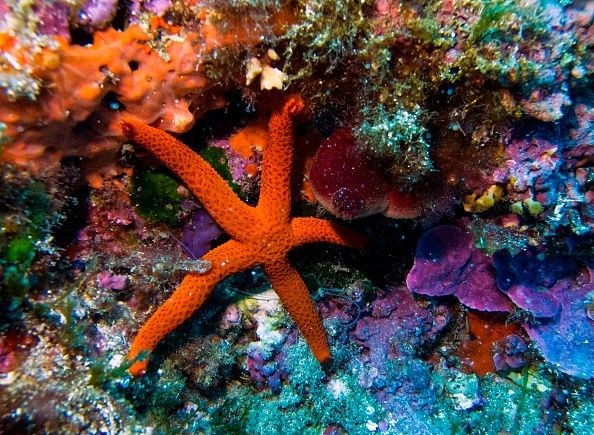Sea Stars May Be Wiped Out By 'Underwater Zombie Apocalypse'

A sea star wasting disease is taking over the oceans and is causing over 20 different species of sea stars to waste away from Mexico to Alaska. It’s an “underwater zombie apocalypse,” Joe Gaydos wildlife veterinarian for the University of California, told Science.
Making the situation even worse is a study by Gaydos that shows that the sea star wasting disease has also taken over the sunflower star. The sunflower star is a main predator within the kelp forest, which has been hit particularly hard by the wasting disease virtually vanishing from existence, Science reported.
The worrying part of the elimination of the sunflower star is the warmer ocean temperatures that are occurring at the same time as the wasting disease as well as how severe the disease’s outbreak has been. This could suggest climate change is directly impacting marine life, the news outlet said.
“This is shocking,” Mark Carr, marine ecologist at UC Santa Cruz, told Science. “This is not just a population reduction, this is virtually the loss of a key species over thousands of miles. We’ve never seen anything like this before.”
Sea star wasting has a unique look that ranges from “weird” to “horror movie” within only a few days, Science reported. The stars are inflicted with white lesions, which then melts the tissue. Limbs fall of the sea star and crawl away on their own. Lastly, the sea star disintegrates into decaying flesh. There has been no identification of the pathogen that is causing the wasting disease, but scientists believe it may be from a virus.
Without the help of the sunflower star, sea urchins can devastate the kelp forests that these seas stars protect. As a result, Northern California has lost more than 90 percent of its kelp forests, according to the California Department of Fish and Wildlife. This is also affecting other species within the kelp forest that depend on it for food and protection.
Nate Mantua, a climate researcher for NOAA, told Science that the sea star wasting disease also coincided with the warmest three-year period for the coastal waters of California from 2014 to 2016.
Due to the rapid decline of the sunflower star should be considered for the U.S. Endangered Species List, Science reported.
© Copyright IBTimes 2025. All rights reserved.





















